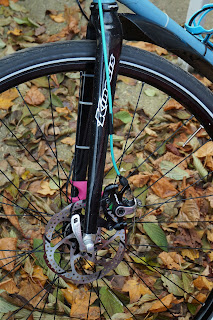I’ve been back in the studio
doing fine art nude photoshoots with some fantastic models. Further
collaborations are being arranged for January. My Minolta film SLR and this partially
stripped Ural motorcycle is all I can publish right now.
I take consent and professionalism deadly
seriously and will not release anything, unless the model(s) involved are
willing for me to do so. Thanks to Brian, who runs the cottage studio http://www.thecottagestudio.co.uk/ for the use of space and lighting
equipment.
Proved an ideal opportunity to
see what my A6000 would do in a studio setting. Behaved impeccably from start
to finish. Traditionally, I’ve run SLRs in the studio and kept CSC systems for
street and location shots but the (minor) gamble paid off. Just as well, given
my Alpha SLR got the sulks and refused to play nicely with the remote trigger.
I’ve appreciated the cold,
harsher weathers, which is ideal for testing lubes, cables, tyres and of
course, clothing. Nasty Lube http://nastylube.com/about/
over in Canada, have sent Seven Day
Cyclist www.Sevendaycyclist.com their
winter lube.
Simple to apply-sparingly,
mind. Too much and you’ll get the spatter effect along your chainstay and rear
wheel. That aside, there’s no hanging about waiting for it to cure. Simply,
drizzle a little into the links of a freshly cleaned chain, wipe away any
excess and scoot-off.
Great for commuting and winter
generally, since a wintry spell can strip lubricant bare in a matter of rides.
So far, it seems cleaner, dare I say less syrupy than some justly popular
favourites. Minus figures in the UK are often over exaggerated but it’s dipped
to minus 2 and felt decidedly raw, when wind chill’s introduced.
We’re looking to get some
narrow section spiked tyres in but for the time being, the Schwalbe Marathon GT
https://www.sevendaycyclist.com/schwalbe-marathon-gt-tyres and the Univega’s GT365 https://www.sevendaycyclist.com/schwalbe-marathon-gt365-tyre are hugging slimy roads reassuringly
well.
Spiked, sometimes referred to
as “snow” tyres all work to the same basic science. The tread ploughs the
white, powdery stuff away, leaving the tungsten carbide spikes to bite into the
ice beneath, providing traction.
Progressive acceleration and
braking remains imperative but a steady tempo means 17mph is a realistic, dare
I say, respectable average speed. Cables are another relatively inexpensive
upgrade.
Obviously, testing tends to
influence replacement frequency but I’d be inclined to replace standard brake
and gear cables twice yearly, seasonally if you’re racing. Rather like stiff
greases, sealed systems are a good investment for bikes in hard service.
These typically comprise of a
factory lubricated, premium grade stainless steel inner wire, a Teflon coated
liner and a heavy duty Kevlar outer. The latter can chomp through paintwork
with alarming haste, especially if a layer of grit is allowed to form between
them.
Most kits these days use
rubberised cuffs to prevent abrasion but carefully cut sections of “helicopter”
tape pretty much eliminates this problem. Layered electrical tape will also do,
although check more frequently to ensure the outers aren’t making inroads.
While not a sealed system in
this sense, I’ve been very impressed with these Jagwire pro road https://www.sevendaycyclist.com/jagwire-pro-road-brake-kit.
Simple to fit, compressionless housings, EZ (easy) tunnelling and high quality,
PTFE impregnated stainless steel inners deliver impressive modulation, feel and
ultimately, stopping prowess! Right,
time I was heading north for another adventure.










